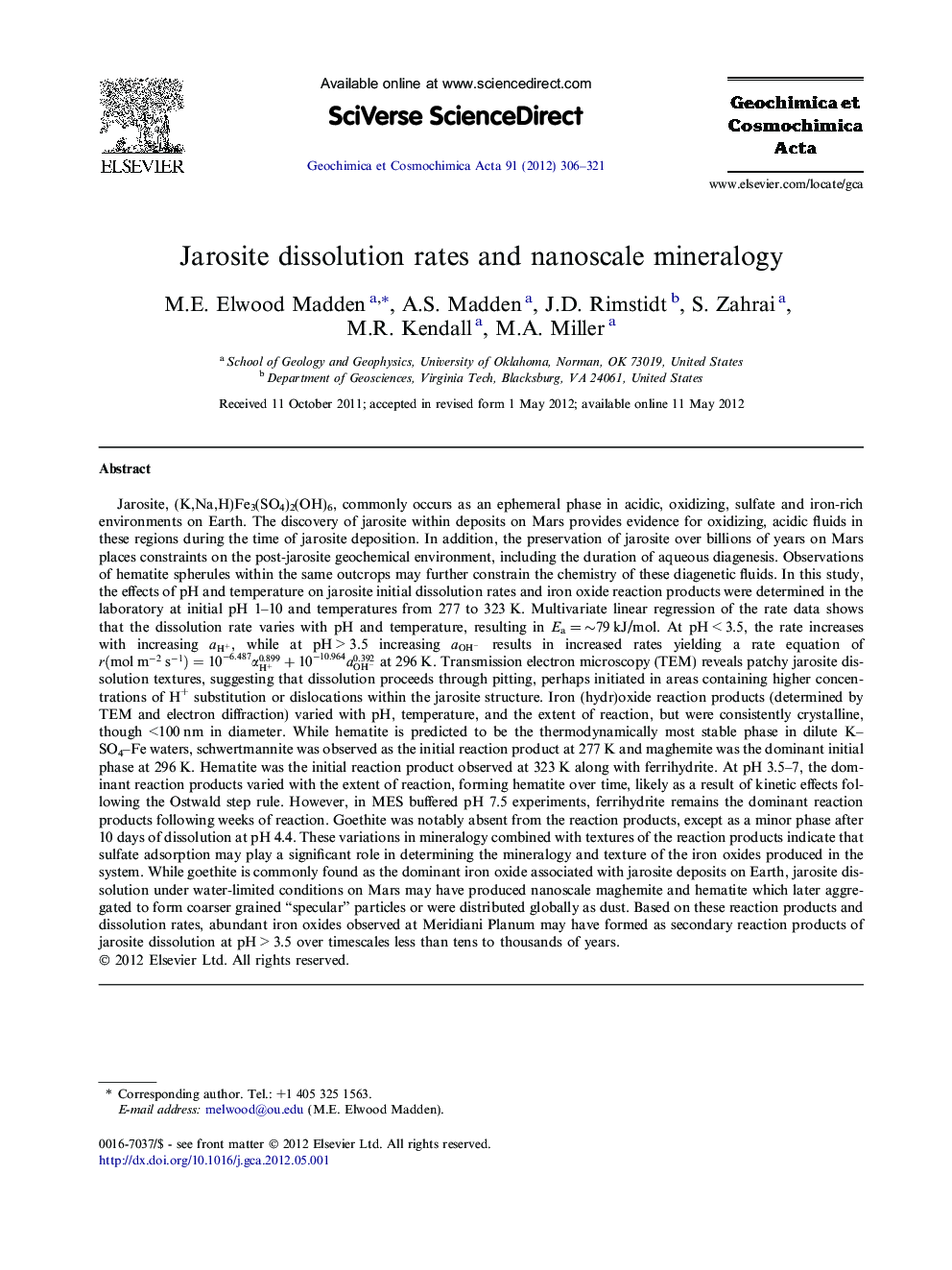| Article ID | Journal | Published Year | Pages | File Type |
|---|---|---|---|---|
| 4702713 | Geochimica et Cosmochimica Acta | 2012 | 16 Pages |
Jarosite, (K,Na,H)Fe3(SO4)2(OH)6, commonly occurs as an ephemeral phase in acidic, oxidizing, sulfate and iron-rich environments on Earth. The discovery of jarosite within deposits on Mars provides evidence for oxidizing, acidic fluids in these regions during the time of jarosite deposition. In addition, the preservation of jarosite over billions of years on Mars places constraints on the post-jarosite geochemical environment, including the duration of aqueous diagenesis. Observations of hematite spherules within the same outcrops may further constrain the chemistry of these diagenetic fluids. In this study, the effects of pH and temperature on jarosite initial dissolution rates and iron oxide reaction products were determined in the laboratory at initial pH 1–10 and temperatures from 277 to 323 K. Multivariate linear regression of the rate data shows that the dissolution rate varies with pH and temperature, resulting in Ea = ∼79 kJ/mol. At pH < 3.5, the rate increases with increasing aH+aH+, while at pH > 3.5 increasing aOH-aOH- results in increased rates yielding a rate equation of r(molm-2s-1)=10-6.487αH+0.899+10-10.964aOH-0.392 at 296 K. Transmission electron microscopy (TEM) reveals patchy jarosite dissolution textures, suggesting that dissolution proceeds through pitting, perhaps initiated in areas containing higher concentrations of H+ substitution or dislocations within the jarosite structure. Iron (hydr)oxide reaction products (determined by TEM and electron diffraction) varied with pH, temperature, and the extent of reaction, but were consistently crystalline, though <100 nm in diameter. While hematite is predicted to be the thermodynamically most stable phase in dilute K–SO4–Fe waters, schwertmannite was observed as the initial reaction product at 277 K and maghemite was the dominant initial phase at 296 K. Hematite was the initial reaction product observed at 323 K along with ferrihydrite. At pH 3.5–7, the dominant reaction products varied with the extent of reaction, forming hematite over time, likely as a result of kinetic effects following the Ostwald step rule. However, in MES buffered pH 7.5 experiments, ferrihydrite remains the dominant reaction products following weeks of reaction. Goethite was notably absent from the reaction products, except as a minor phase after 10 days of dissolution at pH 4.4. These variations in mineralogy combined with textures of the reaction products indicate that sulfate adsorption may play a significant role in determining the mineralogy and texture of the iron oxides produced in the system. While goethite is commonly found as the dominant iron oxide associated with jarosite deposits on Earth, jarosite dissolution under water-limited conditions on Mars may have produced nanoscale maghemite and hematite which later aggregated to form coarser grained “specular” particles or were distributed globally as dust. Based on these reaction products and dissolution rates, abundant iron oxides observed at Meridiani Planum may have formed as secondary reaction products of jarosite dissolution at pH > 3.5 over timescales less than tens to thousands of years.
